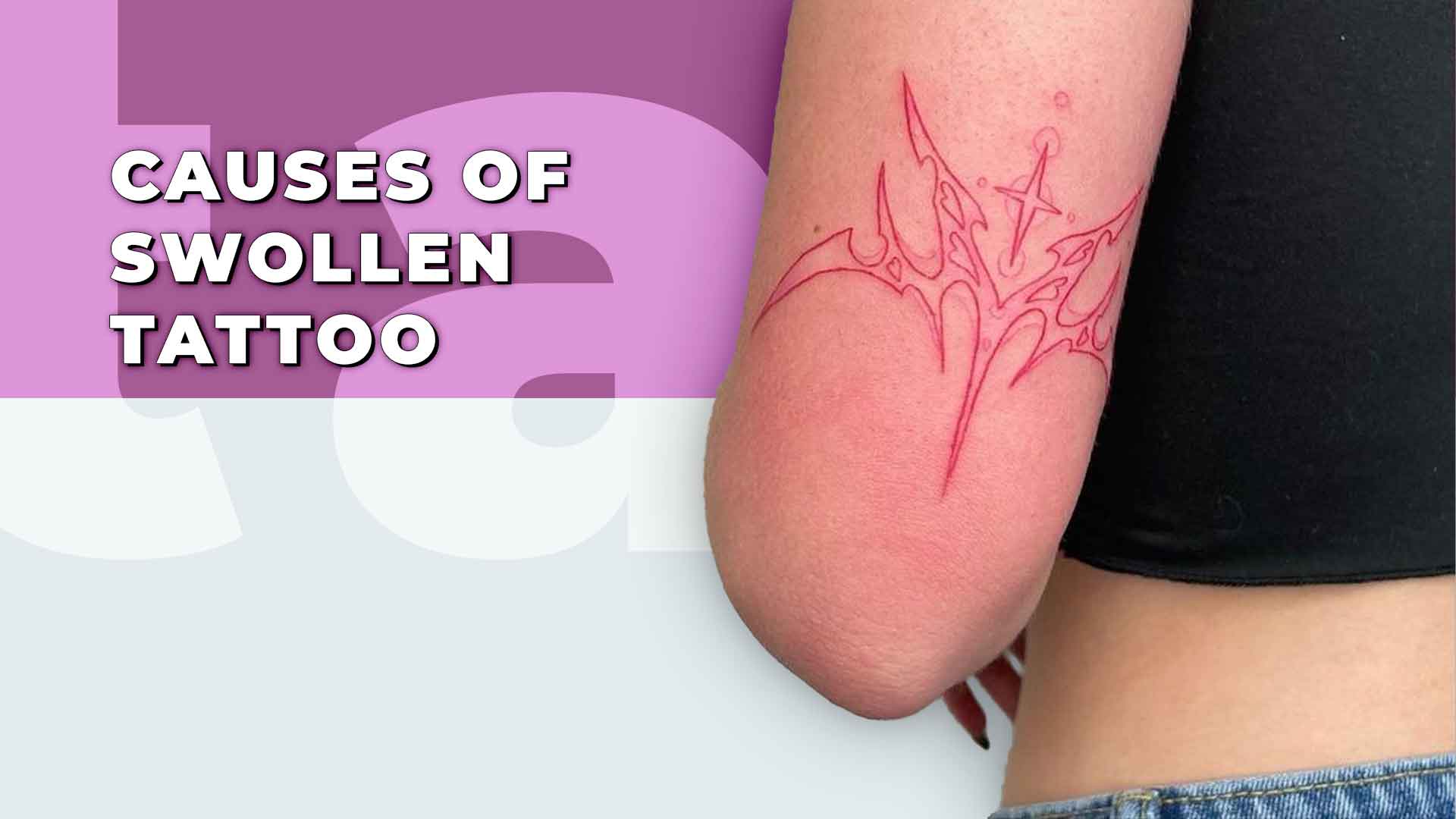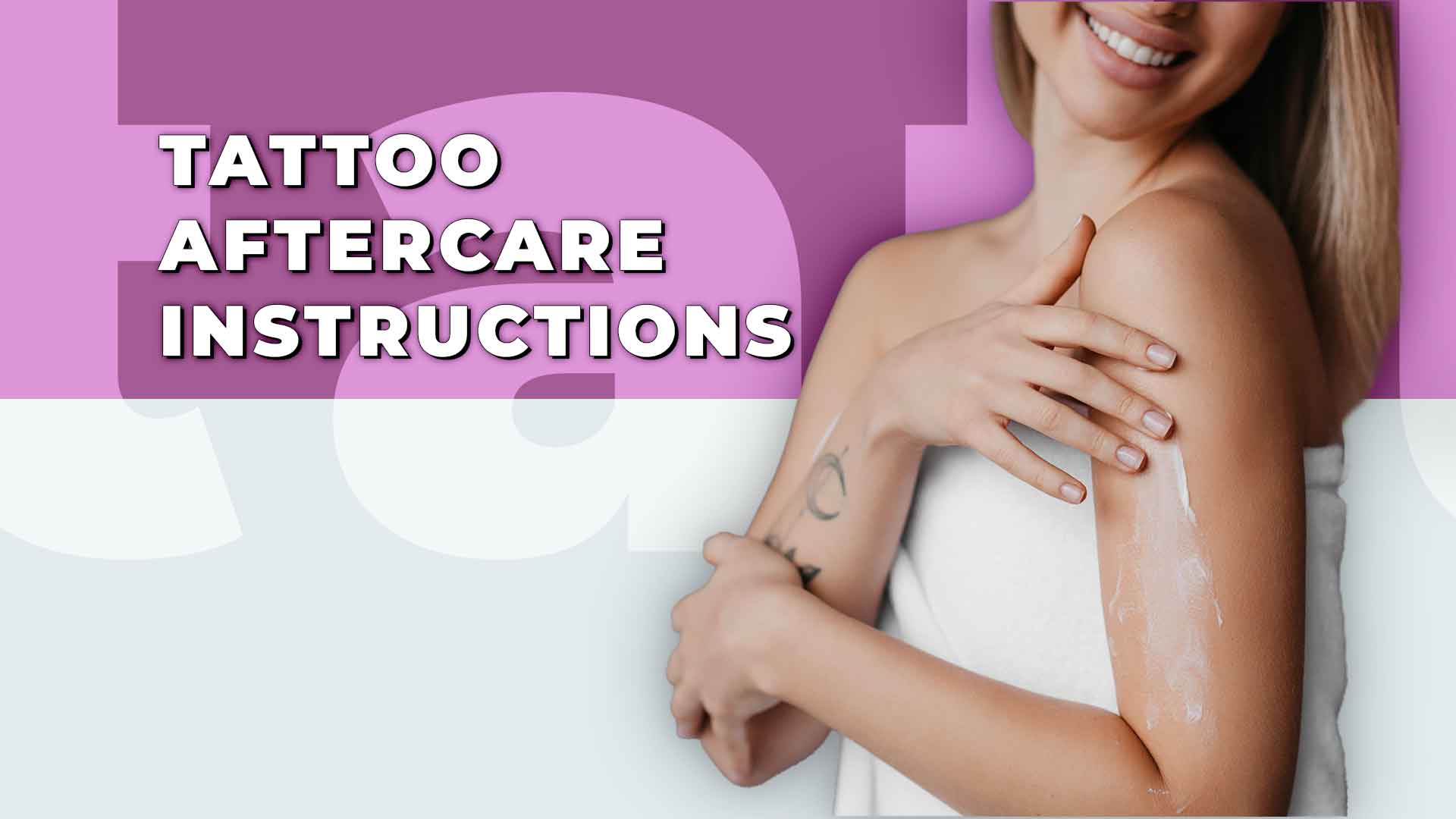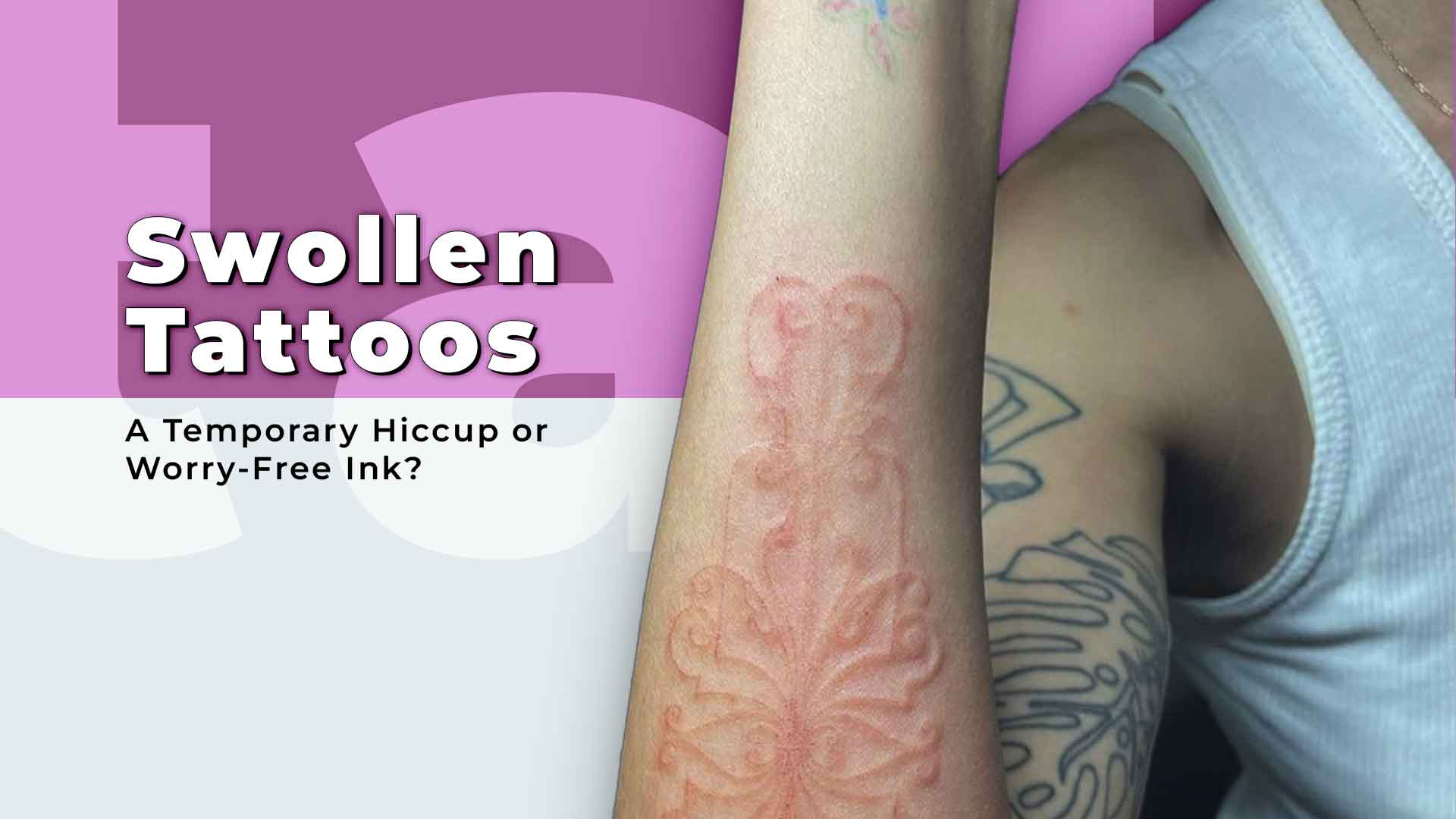Nothing compares to the thrill of getting a new tattoo, where art etches its mark on our skin forever. However, as the vibrant colors settle and the design takes shape, some may encounter an unexpected roadblock: swollen tattoos. Don’t fret – this temporary setback is more common than you might think and can be managed with the proper knowledge and care.
Swelling is a natural response of the body to trauma, and a new tattoo is essentially a wound on the skin. In some cases, the swelling can be severe and cause concern, but in most cases, it is a normal part of the healing process.
In this guide, we’ll walk you through the causes of tattoo swelling, its relevance in the healing process, and how to tackle it head-on. From understanding the body’s reactions to expert tips on aftercare, we’ve got you covered. So, let’s dive into the world of swollen tattoos and ensure your inked masterpiece stands the test of time with pride.
Table of Contents
ToggleCauses of Swollen Tattoo

Swelling is a condition that occurs when the skin around the tattooed area becomes enlarged and puffy. It is a common side effect of getting a tattoo, and it can occur for several reasons, including:
Trauma to the Skin
The tattooing process involves repeatedly puncturing the skin with a needle, which can cause trauma to the skin and underlying tissues. This trauma triggers the body’s immune response, causing inflammation and swelling.
Location of the Tattoo
The location of the tattoo can also affect the amount of swelling that occurs. Areas with thinner skin and more delicate tissues, such as the ankles and feet, are more prone to swelling than areas with thicker skin.
Tattoo Artist Technique
The technique of the tattoo artist also plays a role in the amount of swelling that occurs. Heavy-handed artists may cause more trauma to the skin, resulting in more swelling.
Medications
Certain medications, such as blood thinners, can increase the risk of swelling. We recommend you to inform your tattoo artist of any medications you are taking before getting a tattoo.
Symptoms and Recognition of Swollen Tattoos

Swelling is one of the most common symptoms of a new tattoo. The affected area may feel warm to the touch and may appear red or bruised. In severe cases, the swelling may cause discomfort and limit movement in the affected area.
Prevention and Aftercare for Swollen Tattoos
Preventing swelling in a new tattoo involves proper aftercare. The following are some tips to help prevent swelling:
Before the Tattoo
Before getting a tattoo, it is essential to ensure that you are healthy and well-rested. Eating a healthy meal and staying hydrated can also help to reduce the risk of swelling.
After the Tattoo
After getting a tattoo, it is necessary to follow proper aftercare instructions to reduce the risk of swelling. This includes keeping the tattoo clean and dry, avoiding tight clothing, and avoiding exposure to sun and water.
Managing Swollen Tattoos

If swelling does occur, there are several steps you can take to manage it. These include:
- Applying a cold compress to the affected area
- Elevating the affected area above the heart
- Taking over-the-counter anti-inflammatory medication, such as ibuprofen
- Avoiding alcohol and tobacco, which can increase swelling
- Staying hydrated to help flush out excess fluids
Troubleshooting Swelling Issues
In some cases, swelling may persist or become more severe. This may be a sign of an infection or allergic reaction. If you experience any of the following symptoms, seek medical attention:
- Pain and tenderness that do not improve
- Redness that spreads beyond the tattooed area
- Pus or discharge from the tattoo
- Fever or chills
Pre-tattoo Considerations
Before getting a tattoo, it is important to consider several factors to ensure a safe and successful experience. The following are some pre-tattoo considerations:
Choose a Reputable Tattoo Artist
Choosing a reputable tattoo artist is essential for a safe and successful tattoo experience. Look for an artist who is experienced, licensed, and follows proper safety protocols.
Discuss Medical Conditions with Your Tattoo Artist
If you have any medical conditions, such as diabetes or autoimmune disorders, it is important to discuss them with your tattoo artist before getting a tattoo. Some conditions may increase the risk of complications and require additional precautions.
Avoid Alcohol and Drugs
Avoid consuming alcohol or drugs before getting a tattoo, as they can increase the risk of bleeding and swelling. It is also necessary to avoid taking blood-thinning medications before getting a tattoo.
Choose a Design and Placement
Choose a tattoo design and placement that you will be happy with for years to come. Consider the size, location, and visibility of the tattoo, as well as any potential career implications.
Tattoo Aftercare Instructions

Proper aftercare is essential for a safe and successful tattoo experience. The following are some tattoo aftercare instructions:
Keep the Tattoo Clean and Dry
Keeping the tattoo clean and dry is essential for preventing infection and promoting healing. Wash the tattoo gently with mild soap and water, and avoid soaking it in water or exposing it to sun or heat.
Apply Ointment and Moisturizer
Applying ointment and moisturizer can help to soothe and protect the tattoo. Use a fragrance-free, alcohol-free ointment for the first few days, and switch to a moisturizer once the tattoo starts to peel.
Avoid Tight Clothing and Sun Exposure
Avoid wearing tight clothing that can rub against the tattoo, and avoid exposing the tattoo to the sun or heat, which can cause fading and damage.
Stay Hydrated and Avoid Smoking
Staying hydrated can help to flush out excess fluids and promote healing. Avoid smoking, which can increase the risk of infection and slow down the healing process.
The Final Thoughts
Swelling is a common side effect of getting a tattoo, but it can be managed with proper aftercare. If swelling persists or becomes more severe, it may indicate an infection or allergic reaction, and medical attention should be sought. By following proper aftercare instructions and taking precautions before getting a tattoo, you can ensure a safe and successful experience.
Frequently Asked Questions
Can you ice a swollen tattoo?
Yes, icing a swollen tattoo can help to reduce inflammation and pain. However, it is essential to avoid placing ice directly on the tattooed area, as this can cause further damage to the skin. Instead, wrap the ice in a towel or use a cold compress.
Why is my tattoo red and swollen?
Redness and swelling are common side effects of getting a tattoo. They are a natural part of the body’s immune response to the trauma of the tattooing process. However, if the redness and swelling persist or become more severe, it may be a sign of an infection or allergic reaction.
How long does tattoo swelling typically last?
Tattoo swelling typically lasts for a few days to a week, depending on the size and location of the tattoo. However, in some cases, swelling may persist for longer, especially if the tattoo becomes infected.
What can I do if my tattoo becomes infected and swollen?
If your tattoo becomes infected and swollen, it is essential to seek medical attention. Your doctor may prescribe antibiotics or other medications to help treat the infection and reduce swelling.
Is it normal for my tattoo to be swollen?
Yes, it is normal for a new tattoo to be swollen. Swelling is a natural part of the body’s immune response to trauma, and it typically resolves on its own with proper aftercare.

